Abundance: uncommon
What: young leaves, shoots, flower buds/stalks
How: leaves & shots raw or boiled; flower buds/stalks cooked
Where: woods, fields, disturbed areas, moist areas
When: spring
Nutritional Value: fiber, some minerals
Medicinal Summary:
Sap - sedative, cough suppressant; soothes chronic pain; anti-anxiety (tisane, tincture)
There are twelve different wild Lactuca species, of which I've only found three. These are Lactuca serriola (aka prickly lettuce), Lactuca canadensis, and Lactuca floridana. Lactuca floridana and Lactuca serriola are fairly common in the Houston area while Lactuca canadensis appears more frequently in areas north and east of Houston.
Lactuca canadensis. Note the lobed leaves at the base and unlobed leaves up higher.

Young Lactuca floridana. All leaves are lobed.
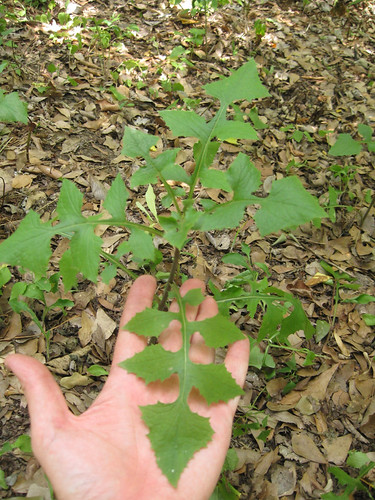
Mature Lactuca floridana.
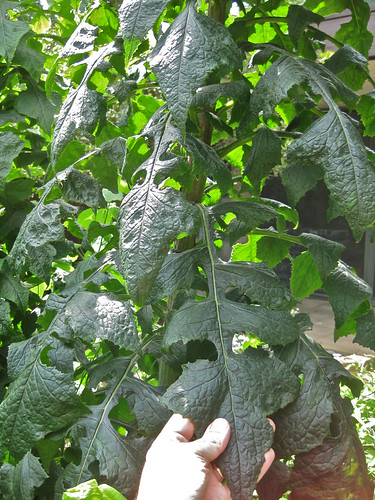
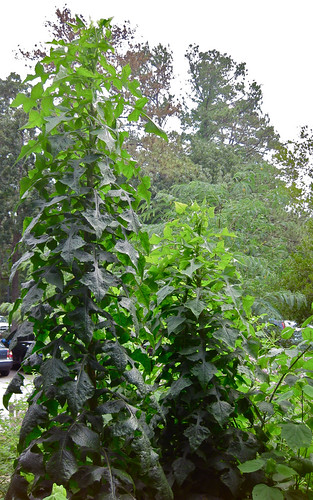
Lactuca floridana flower.
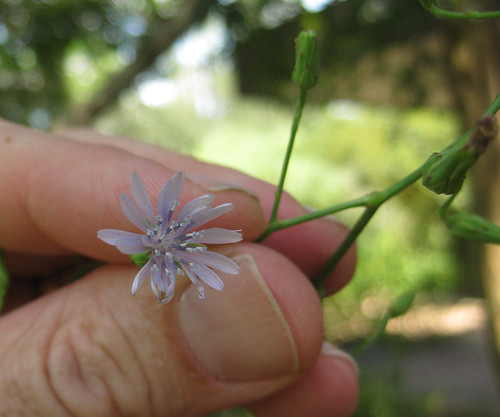
Texas distribution, attributed to U. S. Department of Agriculture. The marked counties are guidelines only. Plants may appear in other counties, especially if used in landscaping.

North American distribution, attributed to U. S. Department of Agriculture.
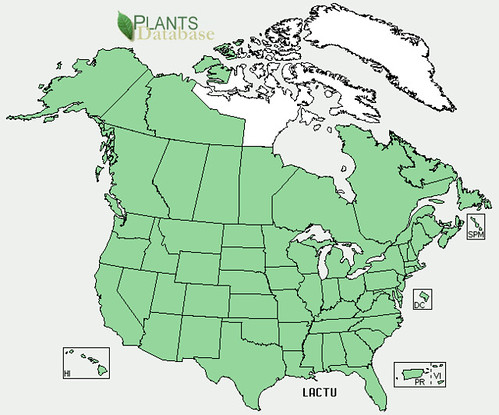
Both the tasty Lactuca canadenesis and the somewhat bitter Lactuca floridana can grow 7-9 feet tall.
Lactuca canadenesis Structural Features:
How to tell them apart:
Leaves: deeply lobed at base of plant but much more un-lobed, grass-like at top of plant.
Sap: white at first but quickly turns dark yellowish as it dries.
Flowers: yellow.
Height: 5-9 feet
L. biennis
Sap: stays white even after drying.
Leaves: deeply lobed from base of plant all the way to those at top.
Flowers: blue-white.
Height: up to 16 feet.
The young leaves of L. canadenesis have a slight bitterness, even less than some arugulas, and can be added to salads raw. The flower stalks are tender before the flowers open and can be snapped off and cooked similar to asparagus.
L. biennis is extremely bitter even when very young. Boiling in multiple changes of water helps but most people still don't like it, plus that removes any minerals. On the plus side, the plants produce a LOT of leaves, so you can get a lot of food from it.
There is some record of wild lettuces being smoked for medicinal purposes but it is supposedly a very harsh smoke and must be mixed with other herbs to reduce this harshness.
Buy my book! Outdoor Adventure Guides Foraging covers 70 of North America's tastiest and easy to find wild edibles shown with the same big pictures as here on the Foraging Texas website.

